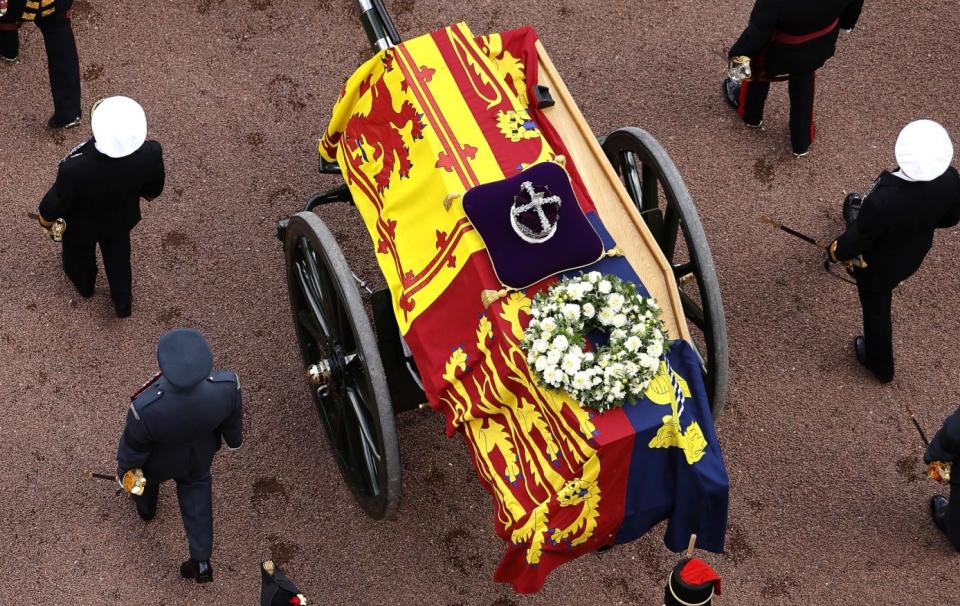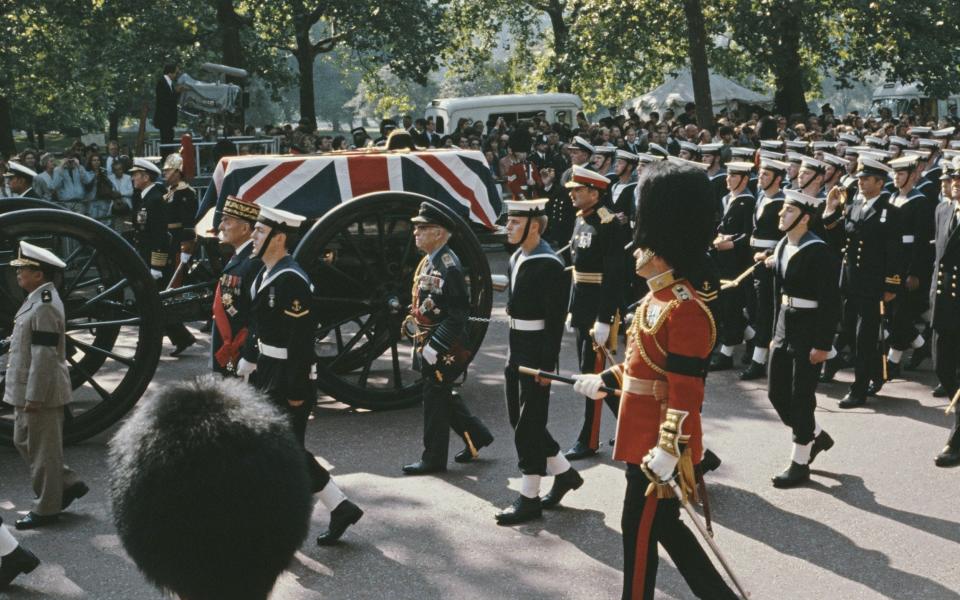Fascinating history of the Royal Navy gun carriage that will carry Queen Elizabeth's coffin

As the late Queen’s coffin was drawn from Buckingham Palace to Westminster Hall on Sept 14, it did so atop the George gun carriage of the King’s Troop Royal Horse Artillery – the same carriage that took her father, George VI, from Sandringham Church to Wolferton Station in February 1952 on his way to London after his death in Norfolk. It was also used for the funeral of her mother in 2002.
For Queen Elizabeth’s funeral today, however, her coffin will sit atop a Royal Navy gun carriage of even greater ceremonial and traditional significance.
The Ordnance BL 12-pounder 6 cwt was manufactured in 1896 and never saw active service, but was drafted into use for the funeral of Queen Victoria and would go on to carry the coffins of King Edward VII, King George V, King George VI, Sir Winston Churchill and Lord Mountbatten.
While royal funeral processions dated back centuries, the use of a gun carriage for a monarch’s funeral was an innovation in 1901 when Victoria died.
The Empress of India had seen such a carriage used for the funeral of her youngest child, Prince Leopold, who had died aged 30 because of haemophilia. Watching that military honour, Victoria, who planned her own obsequies, decided that she would have it too.

The use of the Navy gun carriage comes with a unique tradition derived entirely by chance from Victoria’s funeral: it is pulled by ratings of the Royal Navy, that is non-officers, by hand.
The exact origins of this spectacular custom are unclear, but it appears to have been unintentional. One version of the story has it that the horses that were due to pull the carriage shied and reared when the coffin was placed on the carriage, threatening to throw it to the ground.
One of Victoria’s grandchildren, Princess Alice, Countess of Athlone (below), who witnessed the funeral, said in an interview decades later that the artillery horses had been waiting at Windsor station for hours in the cold and once the coffin was finally placed on the carriage “they wouldn’t start, nothing in the world would make them start”.
Another version holds that an eyelet on the carriage that would have been used to tie the horses to the carriage shattered, perhaps spooking the horses or maybe making it impossible to correctly attach the horses.
Whatever the truth, they were unable to pull the funeral carriage of the greatest monarch of her age and the entire procession appeared on the brink of disaster. At this point, Prince Louis of Battenberg, an Austrian relative of Victoria, father of Lord Louis Mountbatten and future First Sea Lord, asked the Royal Navy representative if his men could pull the carriage.
They could and dozens of sailors “grounded arms and formed fours at the head of the cortege” before pulling Victoria through Windsor using improvised drag ropes.
“It was better, it looked beautiful,” said Princess Alice, “but of course the artillery were furious, you can imagine; humiliated beyond words.”
Further embarrassment was to come, with the Navy apparently refusing to return the carriage. In 1910 it was formally transferred by George V to the Royal Navy.

By the time of Winston Churchill’s death in 1965, the use of the Royal Navy gun carriage had become a fully formalised part of state funerals. When Britain’s greatest prime minister was processed through London he did so pulled by 98 sailors, with 44 following behind holding drag ropes.

 Yahoo News
Yahoo News 
